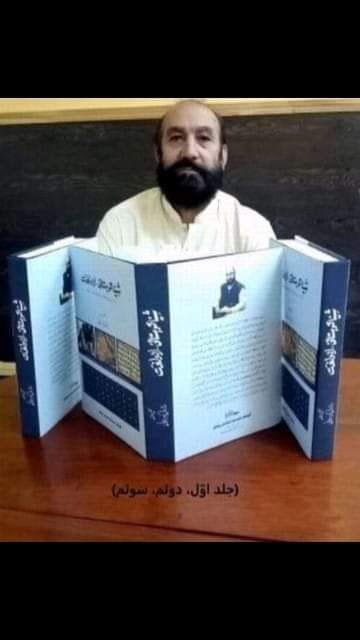Kohistani Shina-Urdu dictionary published
The three-volume Shina-Urdu dictionary of Kohistani dialect has been published by The Gandhara Hindko Board and Hindko Academy.
The first-ever dictionary of the Kohistani dialect of Shina, one of the major Dardic languages of the Indo-Aryan family in Pakistan, has been published.
The three-volume dictionary of Shina-Urdu has been compiled by the linguist, researcher and intellectual Razwal Kohistani.
The Hindko Academy, a Khyber-Pakhtunkhwa government-funded organisation, managed and run by the Gandhara Hindko Board has published the dictionary.
Language activist and writer Zubair Torwali, executive director of Idara Baraye Taleem-o-Taraqi (IBT), Swat-based civil society research and advocacy institute on languages of north and education, which won the prestigious 2021 Linguapax International Award described it as a great work.
“Such work adds to the worth of organizations and governments”, wrote Zubair.
He wrote that it is the outcome of more than three decades’ painstaking work. For the last five years, Mr Razwal was immersed in its compilation.

Commenting on Razwal’s work, the Gilgit-Based human rights defender and columnist Israruddin Israr said Razwal Kohistani is a noted intellectual, linguist, researcher and author of many books on the Shina dialect of Kohistan Division.
Speaking with The High Asia Herald, Mr Israr said, Mr Razwal latest work is a remarkable work and a major addition to the literature on the Shina language spoken by almost four million people in Gilgit Baltistan, Kohistan, Ladakh and Kashmir.
He said this dictionary will undoubtedly play a pivotal role in the preservation and promotion of the Shina language.
Mohammad Ziauddin, secretary-general Hindko Academy and Gandhara Hindko Board told the High Asia Herald that Razwal Kohistani’s compilation of the Shina-Urdu dictionary is an outcome of his painstaking work.
He said that Mr Razwal was a bit hopeless about its publication as no public and private publisher was ready to print the three-volume dictionary.
“I offered him that the Gandhara Hindko Academy will publish it.” He was very excited and now the landmark book is out on the market.
About the activities of the board, Mr Ziauddin, who is serving as Director, National Documentation Wing of the Cabinet division, said since its inception in 1993, it has been working for the promotion of Hindko and other languages of Khyber-Pakhtunkhwa.
The board had been managing the Gandhara Hindko Academy since 2015 under the Public-Private Partnership and had published 400 books.
Shina language is a Dardic language spoken in the mountainous regions of Gilgit, Ghizer, lower Hunza, Tangir, Darel, Astor, Rondu (Baltistan) and Chilas valleys, in Indus Kohistan of KP, as well as in Indian-administered Kashmir’s Neelam (Kishenganga) drainage, the Gures and Tilel valleys, the Dras plain and Ladakh. Until now, only the Gilgiti dialect has received the attention of scholars.
Earlier Razwal and a German researcher had co-authored the first grammar of the Kohistani dialect.
According to Razwal and Ruth Laila Schmidt, a German linguist specializing in Shina grammar and dialectology, the dialect around Chiläs above Indus Kohistan is probably the source of the speech that spread upstream along the Indus Basin to form the Eastern Shina dialects and downstream to form the kohislyö dialect of Indus Kohistan.
In 1994 Razwal Kohistani and Ms Schmidt devised a scientifically designed and tested writing system for the Shina of Kohistan District, using an Arabic orthography using the writing system to produce a 57-page primer.
Ruth Laila Schmidt and Razwal Kohistani devised “A Grammar of the Shina Language of Indus Kohistan. The book is the result of the collaboration over many years of the two authors.
Rich in data not accessible anywhere else, it also offers some particularly outstanding analytical sections.

The High Asia Herald is a member of High Asia Media Group — a window to High Asia and Central Asia







